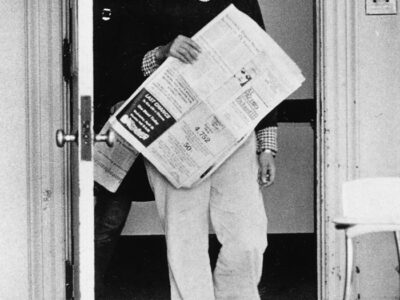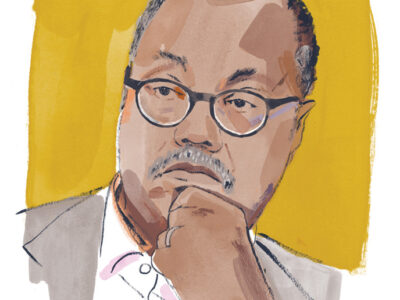October 11, 2006—the day New York Yankees pitcher Cory Lidle’s small airplane crashed into the 40th floor of an apartment building in Manhattan—was a pivotal moment in the advance of The New York Times into the digital age. Rather than dispatching print reporters and photographers, drawing up a story list for the next day’s paper, and posting a blurb on the website, a video unit was sent out first, and journalism’s venerable “Gray Lady” broke the story online.
“The coverage was faster, richer, and deeper than anything we’ve done before online,” recalled Martin Nisenholtz ASC’79, the senior vice president of digital operations at The New York Times Company, in a recent talk at the Annenberg School for Communication. “Within a few hours we were offering slideshows, audio, video, pictures, a multimedia graphic so remarkable that it drew more than 100 compliments from readers.”
More generally, said Nisenholtz, who since February 2005 has overseen the strategy, development, operations, and management of the Times Company’s digital properties, including About.com, that editorial choice exemplified the latest phase in a process many believe will totally transform the ways in which newsrooms and magazines gather news, deliver content, and generate revenue.
“I’m not sure that our new, digital journalism will ever really replace the extraordinary package that is the printed newspaper,” he said. “The more important strategic point is that as participants in this rapidly changing landscape, we imagine new possibilities and prepare to recognize the sparks that lead to big fires and fuel them when they ignite.”
This view is based on a theory Nisenholtz developed early in his career, when he was wooed away from the doctoral program at Annenberg in 1979 to manage a research project at New York University in interactive media. “Long ago, it struck me that we were witnessing a century-long historical arc that began in the 1940s,” he said, explaining that this arc can be broken down into four phases.
Phase I began shortly after WWII with the invention of digital computing. “This was characterized by the aggregation and sorting of the world’s knowledge, [and] reached commercial viability in the 1960s, but was accessible mostly by government officials and academics.”
Phase II began in the early 1990s and is now expanding rapidly. This expansion is due in part to the fact that the Internet is accessible to a global consumer base, and companies like Google are reaching a worldwide audience, are highly accountable, and very targeted, he said. “They are also satisfying massive numbers of users well enough to fuel its advertising business.”
Currently, we are entering Phase III, which Nisenholtz said was born from the ashes of the dotcom bust in 2002-2003. He believes this phase—the Times’ coverage of Lidle’s fatal plane crash is an example—has given birth to new forms of media that bring users new and original ways of communicating. “Users will be able to associate content from a wide variety of sources, including filtered access to other users, through a common interface,” he said. “Online communities will be available to discuss any ‘article’ at any time of the night or day. A user lands on the article and discussions about that article are continuous. News reports become a focal point for social networking. Again, we see this bubbling-up in web logs today.”
Nisenholtz projects that the final phase will take hold around 2012. “Devices, operating systems, and interfaces will come together to create massive institutional dislocation and completely and radically transform corporate, academic, and governmental institutions that support the information economy. These transformations, which may seem apparent to some even today, have only just begun,” he said.
Nisenholtz contends that changes will bring growing pains. “But in the end,” he said, “the Millennium Generation—the first to grow up with complete connectivity—will absorb and convey information in new ways. It is incumbent on journalists and the field of journalism to understand this and address those needs.”
—Hope Katz Gibbs ASC’86




